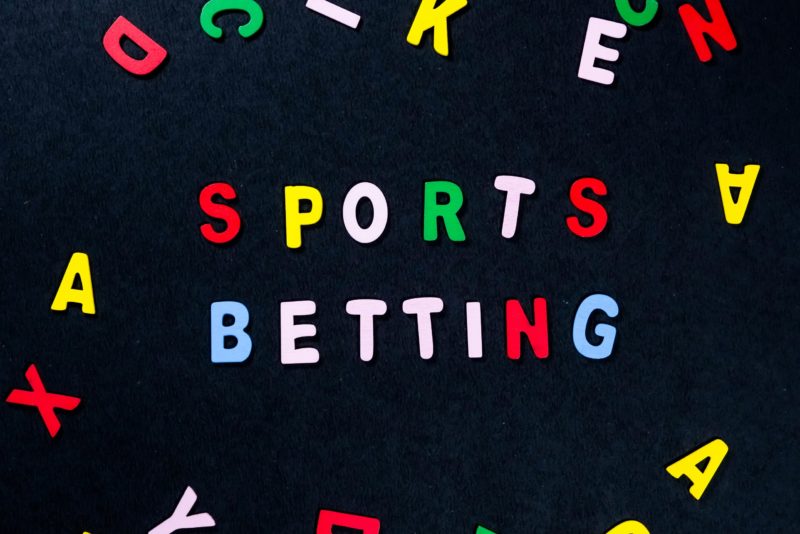By Rhonda
The dog days of summer are here, and of the four big sports leagues, all are on hiatus except for MLB. So, let’s take a moment and talk sports betting 101. First rule of thumb, if you are a novice, don’t start by betting on baseball, because it’s very difficult. MLB is more demanding, statistically driven and less exciting to the majority of sports fans. Further, there are 162 games in a season, meaning it’s far less predictable than other sports. Even the best teams lose 60 games a year, with many of them coming against inferior opponents.
You may want to start by wagering on football, which is right around the corner. It’s the most popular sport to bet on and it has the best potential for making money. While some people are under the impression that football is unpredictable, the opposite is more often true. Big underdogs rarely beat powerhouses in the NFL, making it easier for sports gamblers to place winning bets.
With sports betting now legal in many states, millions of sports fans will be looking to enter the betting market for the first time. But where do you begin when the terms are confusing or if it all seems overwhelming? I’ve got some terminology and tips for you below. I’m a woman, but this is by no means written just for women, it’s for anyone who is a novice sports bettor or wants to get in the game.
Favorites vs Underdogs: When oddsmakers (professional people who set odds for various sports events) release a betting line on a game, the first thing they do is decide which team should be the favorite and which team should be the underdog. If the game is evenly matched and it’s a toss-up, books will open it as a “pick” or “pick em.”
Favorites are again given a “minus” designation, such as -150 or -200. If a favorite is -200, that means you have to risk $200 to win $100. If the favorite wins, you get $100, but if the favorite loses, you’re out $200.
Underdogs are given a “plus” designation, such as +150 or +200. If an underdog is +200, that means if you bet $100 on them and they win the game, you get $200. If they lose the game, you lose only the $100 that you risked. Because underdogs are expected to lose, there is more of a reward when betting on them.
Spreads vs The Moneyline: There are two ways to bet. You can bet on the point spread or simply spread, which is a margin of victory. For example, let’s say you want to bet on the Bills vs the Rams. The spread is Bills -3. This means that the oddsmakers believe the Bills will win by 3 points. If you bet on the Bills to win, you need them to win by 4 or more to win your bet. The other option is placing a bet on which team you think will win using no spread. Your bet is based solely on which team will win the game. This is called a moneyline bet.
Over/Unders: A relatively simple sports bet is the over/under bet. Oddsmakers will also set a total number of points scored in a game by both teams combined. For instance, if Team A is playing Team B, the over/under might be set at 59.5. If you bet the over, you would win as long as the total points scored by both teams combined was 60 or more. Inversely, if you bet the under, you would win if the total was 59 or fewer.
-110 Listed Next To My Bet: Nothing is free. The oddsmakers put a tax on every bet, which is typically called the “juice” or “vig.” The juice is the commission you have to pay to the sportsbook when you place a bet.
Say the Kansas Jayhawks are -5, meaning they are favored to win by five, that means if you want to bet on Kansas as a 5-point favorite, you need to risk $110 to win $100.
The juice can also be a positive number, such as Ohio State -7 (+110). That means if you bet $100 on Ohio State as a 7-point favorite and it covers, you win $110. If it loses, you lose only the $100 that you risked.
You always have to risk more on a favorite than you’d win on an underdog, otherwise, sportsbooks would be out of business.
How To Place A Bet: Sports betting has emerged from the shadows and into the mainstream and legalized sports betting is spreading across America. There have never been so many available options to bet on sports. Click here to see if sports betting is legal in your state.
There are two ways to make a bet. One, a brick-and-mortar sports book, a physical location in order to place a wager. But, the much easier and accessible way these days is through mobile sports betting where you can place a wager online, or download the company’s app from your phone.
Some of the top mobile online sports betting companies are DraftKings, BetMGM, FanDuel, Caesars Sportsbook, PointsBet and BetRivers.
How Much to Bet: It’s exciting to have skin in the game and winning is exhilarating… but losing sucks. In the end, you should only risk what you can afford to lose. Remember, it’s a marathon, not a sprint. Some days you will lose, some days you will win. You could have an 8-game winning streak, but you will eventually lose.
Some professional bettors recommend a flat-betting approach. This means betting the same amount on every game and risking only 1% to 5% of your bankroll per play (the bankroll is the starting amount you have at your disposal to bet with). For example, if you are starting with a bankroll of $100, you should risk no more than $5 per game.
Rotation Numbers: Rotation numbers are what’s listed to the left of a team on the board. They are also referred to as the NSS number or Vegas ID number. They are unique to the team, sport and league, and universal across most sportsbooks.
For example, you might see the number “312” listed next to the Cowboys -120. If you’re at a casino and want to bet $100 on the Cowboys, walk up to the window with your money and say, “$100 on 312, Cowboys -120.”
Lines Move in Real Time: The sports betting market is fluid much like the stock market. The line, another word for point-spread, is always moving. Throughout the day, bookmakers will adjust the odds depending on the action they’re taking and other news, such as injuries and weather. There can be line movement all week, so keep your eye on your top play if you choose to bet later in the week, or close to game time.
There are a few dos and don’ts as a novice bettor:
Don’t: overreact to a winning or losing streak. I encourage you to stick to that flat-betting approach. Many bettors will grow overconfident when they go on a hot streak or win several bets in a row and begin to increase their bets. Likewise, some bettors will experience a cold streak and begin to either increase their bet size in an attempt to get back to their original bankroll or get frustrated and stop betting entirely. Just take it easy.
Don’t: bet with your heart, bet with your head. Just because you love the Steelers, doesn’t mean you should bet on them. Rooting for the home team is one thing, but not at the expense of your bankroll. Bet on the facts and your research.
Don’t: overreact to trends. Just because a team has won the last five games, it doesn’t mean they are going to win the sixth. Historically, betting data has shown that teams are actually undervalued coming off a loss. Many professional sports gamblers would encourage you to buy on bad news and sell on good.
Do: Shop for the best line. Don’t limit yourself to just one sportsbook. Set up accounts at three different types of sportsbooks (below), and you will frequently get lines that are at least 0.5-point better than the market average.
a) Square books, which typically offer the best underdog lines.
b) Sharp books, which typically offer the best lines on favorites.
c) Reduced juice books, which are great for everyday betting because with -105 juice on most games bettors only need to win at a 51.22% clip to break even.
Do: Bet against the public. It’s a simple concept that many people are too afraid to apply – the team receiving the minority of bets might provide more value. It does not matter how many novice bettors are on a certain side of a game. What matters is how much money is on a certain side of a game. Reverse line movement can be a great indicator of sharp money (a sharp is someone who knows what they are doing in sports betting). If 80% of the public is on Team A -8 but they move to -7.5 or -7, we know that a large bet was placed on Team B which moved the line against the public.
Here are some final thoughts. Remember it takes time to become a successful sports bettor. Successful bettors have an average winning percentage anywhere from 53-55 percent, and to the casual/new bettor, that seems pretty doable. Just win every other bet, right? Very wrong. When you think a bet is a lock or easy money, think again. Don’t fall into the trap of betting the favorite, because it’s, in fact, usually the unpopular pick that will hit more times than not.
Keep in mind that gambling can become an addiction as it stimulates the brain’s reward system. When you are winning, it’s exciting and the adrenaline is pumping. Losing money is no fun and your brain may start to tell you, “I’m going to go win my money back,” or “I can get it back.” This is when you know you may have issues. If you’re already a sports bettor and think you have a problem, visit Gamblers Anonymous.
Photo Credit: Sukhjinder







